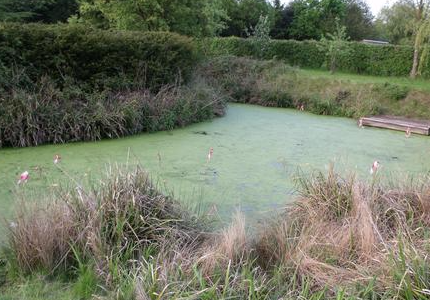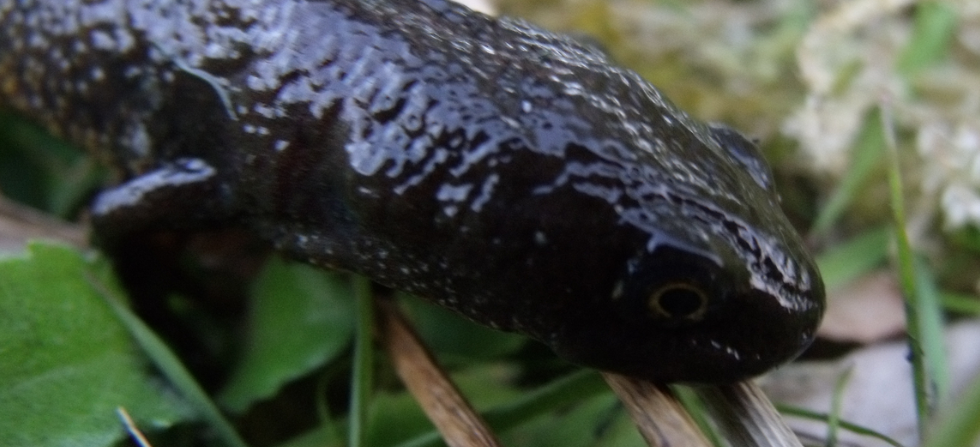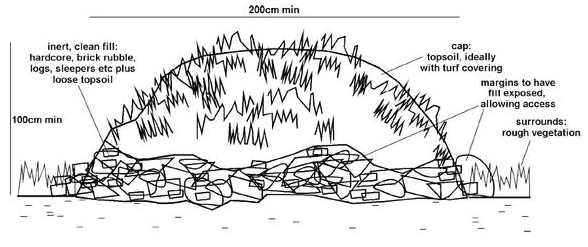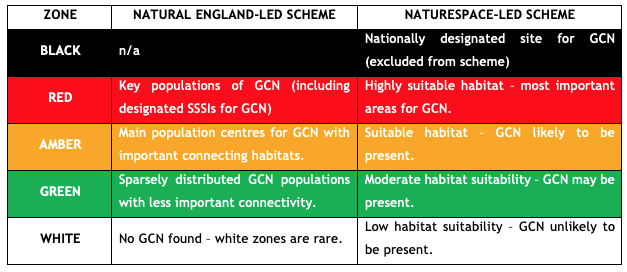They are undertaken in three stages as detailed below and must include ponds within 500m of the site regardless of ownership.
Great Crested Newt Survey
GCN surveys are often needed when planning a demolition or extension of a building, were ponds and surrounding land will be affected.

Daytime assessment known as Habitat Suitability Index (HSI)
Consisting of a 10 point system that generates a score, allowing for the likelihood of GCN to be established. If a score of 0.5 or above is calculated a stage 2 survey will be required. The HSI is not a definitive assessment of the pond, recent research suggests that low scores do not mean GCN will not be present, whereas higher scores are more reliable.
The pond is surveyed at stage 1.
Environmental DNA (eDNA)
It is now possible to take water samples and have a lab check for GCN DNA. If you need a definitive ‘yes or no’ to whether GCN are present – please send in a request for a quote for this service – eDNA kits are obtained from a lab and you require one kit per pond/waterbody + courier fees and sampling time.

Dusk and dawn assessment
Consisting of surveyors searching for GCN utilizing several standard methods that include funnel trapping (bottles or similar), egg searching, torch searching and refuge searching. This information allows the species, population and GCN use to be established.
A minimum of four visits must be undertaken between mid-April and mid-May and a further two visits, if GCN are found to be present, before mid-June.
If GCN are found to be present stage 3 Mitigation/European protected species licence will be required.

Refuge design – Source – GCN mitigation handbook (2001)
Mitigation and/or Natural England Protected Species Licence
This stage is undertaken post granted planning consent. It usually consists of providing replacement habitat (including ponds if being removed), terrestrial habitat and compensating for the loss of feeding and hibernation areas that is being utilized by GCN.
A licence is required when an offence under the habitats directive (The Conservation of Habitats and Species (Amendment) (EU Exit) Regulations 2019.) and wildlife and countryside act 1981 (as amended) cannot be avoided e.g. damaging a GCN habitat.

Table 1: Risk Zones in Natural England-Led and Nature Space-Led Schemes.
District Level Licensing Schemes for Great Crested Newt
District level Licensing (DLL) is a scheme set-up by Government to help prevent delays and constraints to projects where great crested newts have been found.
This is now the main way of dealing with Great Crested Newt in the planning system, it is generally quickera nd as cost effective as a traditioanl survey.
The schemes are run by Nature Space and Natural England and are independent of ecology consultants. The zones (see below and links) are created from surveying, eDNA sampling and modelling.
Is my development in a District Level Licensing Scheme?
The Natural England-led Scheme and The NatureSpace Partnership-led Scheme, both have websites and these will detail the coverage and zones in which a site falls. More details can be found at Nature Space, GOV.UK and Natural England.
What are the benefits of a District Level Licensing Scheme?
The standard Great Crested Newt survey methods and traditional licensing route can be costly and laborious, and with the seasonal constraints can span up to two years. The District Level Licensing Scheme can be accessed year-round with no surveys necessary. It is quick, simple and provides a certain outcome for mitigating for Great Crested Newt habitat loss. It can also be cost-effective in some cases.
What are the potential drawbacks of a District Level Licensing Scheme?
The focus of these schemes is on mitigating for the loss of Great Crested Newt habitat by financing habitat creation and enhancement elsewhere and is not directly on preventing the harm of individual Great Crested Newts. In some cases, the District Level Licensing Scheme, depending on the zone, can licence the development of a site with no mitigation measures for protecting individual Great Crested Newts on site.
In addition, the fees associated with the zones, in some cases, do not appear to reflect the impact caused to Great Crested Newt habitat on smaller-scale developments. For example, under the Nature Space District Licensing Scheme, for a “minor” development – the replacement of a section of hedgerow surrounding an arable field to a native-rich hedgerow – in a Red Zone, carried a primary fee of £5,000 with the secondary fee anywhere up to £50,000.
References
Natural England, 2021. Natural England Open Data, accessed on 9th February 2021.
Nature Space UK, 2021. Impact Risk Map, accessed on 9th February 2021.
UK Government, 2021. Great Crested Newt District Level Licensing Schemes, accessed on 9th February 2021.
It’s simple to start your GCN Survey today…
Our friendly and professional team can answer your questions and provide your quote promptly. Get in touch today for your free, no obligation quote.
